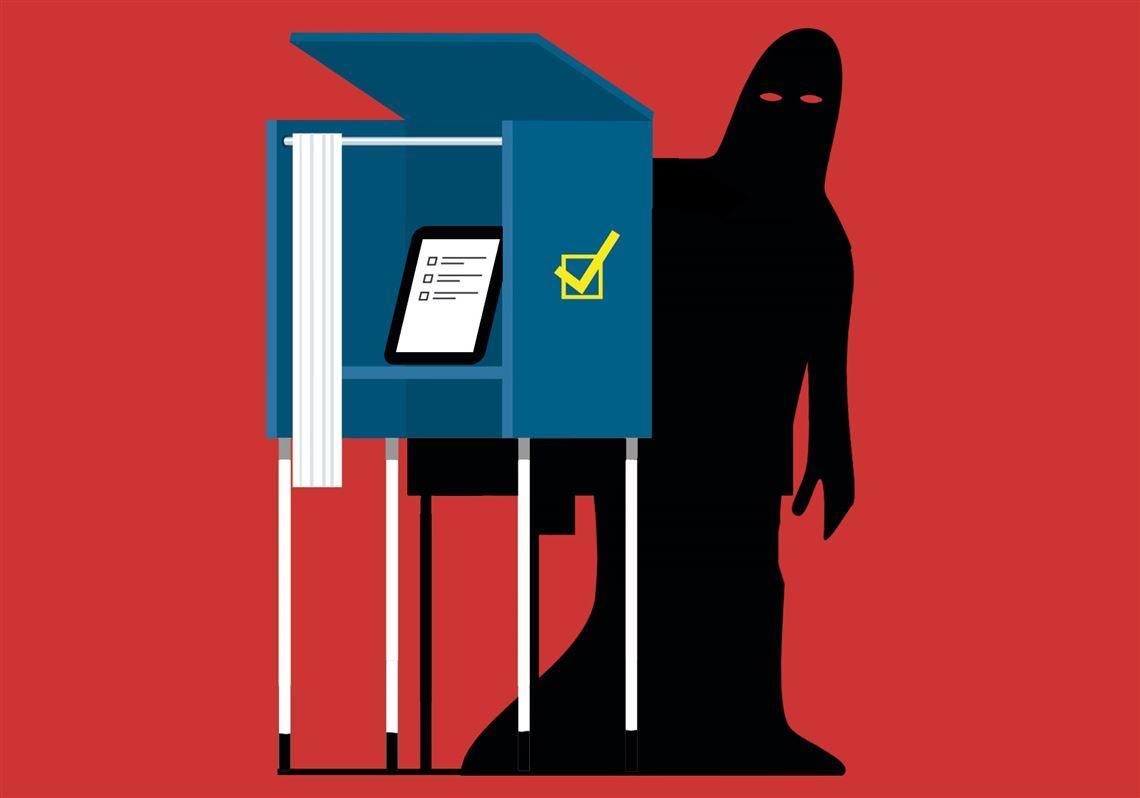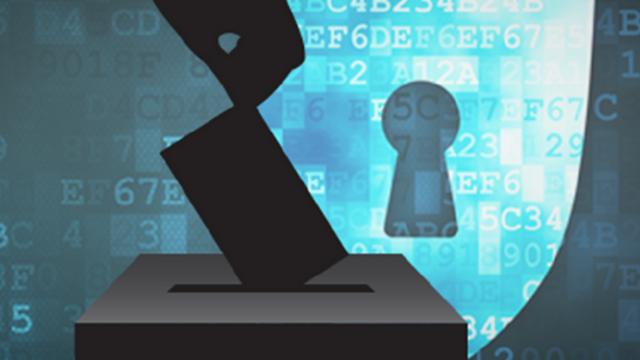In an era where every digital click can ripple through the fabric of democracy, the security of elections has never been more crucial-or more complex. As technology evolves at breakneck speed, so do the tactics of those who seek to undermine the very foundations of free and fair voting. From advanced cyber defenses to emerging threats that challenge traditional safeguards, the landscape of election security is shifting beneath our feet. This article delves into what’s new in the fight to protect the vote, exploring both the innovations designed to secure elections and the risks that continue to loom on the horizon. In understanding these dynamics, we take a vital step toward safeguarding the future of democracy itself.
Emerging Technologies Shaping the Future of Election Security
As election systems evolve, a wave of cutting-edge technologies is being integrated to safeguard the integrity of voting processes. Among these, blockchain technology stands out by offering an immutable and transparent ledger that can record votes in a tamper-resistant manner. This decentralized approach reduces the risk of centralized points of failure, making it exponentially harder for bad actors to manipulate results without detection.
Another breakthrough comes from artificial intelligence (AI) and machine learning, which are being employed to detect anomalies and suspicious patterns in real-time. By continuously analyzing voting data and network traffic, AI systems can flag potential cyberattacks or irregularities faster than traditional methods. This proactive defense layer is crucial for maintaining voter trust in an increasingly digital election landscape.
Moreover, biometric verification is revolutionizing voter authentication by replacing outdated methods with fingerprint, facial recognition, and even iris scans. These technologies reduce the chances of voter impersonation and ensure that every ballot cast is linked to an authorized individual. However, the implementation of biometrics must be carefully balanced with privacy concerns and data protection regulations.
| Technology | Key Benefit | Primary Risk |
|---|---|---|
| Blockchain | Immutable vote recording | Scalability challenges |
| AI & Machine Learning | Real-time anomaly detection | False positives impacting operations |
| Biometric Verification | Enhanced voter authentication | Privacy and data misuse concerns |
Understanding New Threat Vectors in the Digital Voting Landscape
As digital voting systems evolve, so do the methods adversaries use to exploit them. Traditional threats like ballot tampering and voter impersonation are now accompanied by sophisticated cyberattacks targeting the very infrastructure that underpins election integrity. These new threat vectors include supply chain vulnerabilities, where malicious code can be inserted during the hardware or software development phases, and advanced social engineering tactics designed to manipulate election officials or voters themselves.
Emerging attack surfaces are also expanding beyond the voting machines. Cloud-based vote tallying systems, online voter registration portals, and election management software have all become attractive targets. Attackers aim not only to disrupt services but to subtly alter vote counts or sow distrust through misinformation campaigns that exploit social media platforms and automated bots.
- Firmware manipulation: Exploiting embedded software in hardware components.
- Supply chain compromise: Introducing vulnerabilities before system deployment.
- Credential theft: Accessing sensitive election management systems via phishing or brute force.
- Deepfake misinformation: Generating fake news and videos to influence voter perceptions.
| Threat Vector | Potential Impact | Mitigation Strategy |
|---|---|---|
| Firmware Manipulation | Altered vote recording | Rigorous code audits and hardware validation |
| Supply Chain Attacks | Backdoor implantation | Vendor vetting and secure procurement processes |
| Credential Theft | Unauthorized system access | Multi-factor authentication and employee training |
| Deepfake Misinformation | Voter manipulation | Public awareness campaigns and AI detection tools |
The Role of Transparency and Auditability in Building Voter Trust
At the heart of a secure election system lies the principle of openness. When voters can see, understand, and verify the processes behind casting and counting ballots, their faith in the system strengthens exponentially. Transparency is not just a buzzword; it is the foundation that allows citizens to feel confident that their votes are accurately recorded and fairly counted.
Auditability, on the other hand, serves as a critical safeguard. By enabling independent verification of election results through reliable audit trails, election officials ensure that discrepancies can be detected and corrected swiftly. This two-fold approach-openness combined with rigorous checks-helps to prevent fraud and errors, reinforcing the integrity of the democratic process.
Key elements that enhance transparency and auditability include:
- Open-source election software, allowing public scrutiny
- Voter-verifiable paper audit trails (VVPAT)
- Routine independent post-election audits
- Clear communication of procedures and results to the public
| Audit Method | Description | Benefit |
|---|---|---|
| Risk-Limiting Audit | Statistically guarantees the correctness of results | Minimizes chance of undetected errors |
| Parallel Testing | Simulates election conditions before and during voting | Detects system vulnerabilities early |
| Chain of Custody Verification | Ensures secure handling of ballots and equipment | Prevents tampering or loss |
Ultimately, transparency paired with robust audit mechanisms cultivates a resilient electoral environment where trust is earned and maintained. As technology evolves, these pillars will continue to be indispensable in safeguarding the democratic voice.
Best Practices for Safeguarding Election Infrastructure Against Cyberattacks
Protecting election infrastructure requires a multi-layered approach that combines technology, policy, and human vigilance. One of the foundational steps is segmenting networks to isolate critical election systems from the internet and less secure networks. This limits exposure to external threats and reduces the risk of lateral movement within systems if a breach occurs. Additionally, enforcing strict access controls and continuously monitoring for suspicious activity ensures that only authorized personnel can interact with sensitive components.
Regularly updating and patching software is non-negotiable in defending against known vulnerabilities. Election systems should undergo frequent penetration testing and security audits to identify weak points before adversaries do. Coupling these technical defenses with comprehensive training programs for election workers cultivates a security-aware culture, where social engineering attempts are recognized and thwarted effectively.
Transparency and collaboration also play pivotal roles. Engaging with federal agencies, cybersecurity experts, and even the public can foster trust and enhance resilience. Shared threat intelligence enables quicker responses to emerging cyber threats. Below is a summary of essential measures that can form the backbone of a robust defense strategy:
- Network segmentation: Isolate election systems from external networks.
- Access management: Use multi-factor authentication and least-privilege principles.
- System updates: Apply patches promptly and maintain updated software.
- Continuous monitoring: Employ real-time threat detection tools.
- Employee training: Conduct regular cybersecurity awareness sessions.
- Incident response planning: Develop and rehearse comprehensive response protocols.
| Security Control | Purpose | Frequency |
|---|---|---|
| Patch Management | Fix vulnerabilities | Monthly or as needed |
| Penetration Testing | Identify system weaknesses | Quarterly |
| Access Reviews | Verify user permissions | Monthly |
| Employee Training | Enhance awareness | Biannually |
Collaborative Approaches to Strengthening Election Security Across Stakeholders
Election security is no longer the responsibility of a single entity-it requires a dynamic ecosystem of collaboration where government bodies, technology providers, civil society, and voters themselves work in synergy. Each stakeholder brings a unique perspective and set of tools to the table, making the collective effort more resilient against emerging threats. The power of shared intelligence and coordinated response strategies ensures that no single vulnerability can be exploited without swift detection and counteraction.
Key collaborative strategies include:
- Information Sharing Networks: Real-time exchange of threat data helps anticipate and neutralize risks before they escalate.
- Joint Cybersecurity Exercises: Cross-sector simulations prepare all parties for coordinated defense under pressure.
- Community Engagement Programs: Educating voters about misinformation and security measures fosters a vigilant electorate.
Technology providers and election officials often co-develop security protocols that are both robust and adaptable. Open-source platforms, for instance, invite scrutiny and innovation from a global pool of experts, ensuring that vulnerabilities are rapidly identified and patched. Meanwhile, civil society organizations act as watchdogs, advocating for transparency and accountability, which are critical to maintaining public trust.
| Stakeholder | Role in Security | Example Initiative |
|---|---|---|
| Government Agencies | Policy & enforcement | National Cybersecurity Task Force |
| Technology Vendors | System integrity & updates | Open-source voting software audits |
| Civil Society Groups | Transparency & voter education | Election monitoring campaigns |
| Voters | Awareness & reporting | Community misinformation alerts |
The Way Forward
As the landscape of election security continues to evolve, so too does the delicate balance between innovation and vulnerability. While new technologies promise greater accuracy and accessibility, they also usher in fresh challenges that demand vigilance and adaptability. Ultimately, the integrity of our democratic process hinges on the collective effort of policymakers, technologists, and citizens alike to stay informed, stay prepared, and safeguard the vote. In this ever-changing arena, understanding what’s new and what’s at risk is not just an option-it’s a responsibility we all share.

